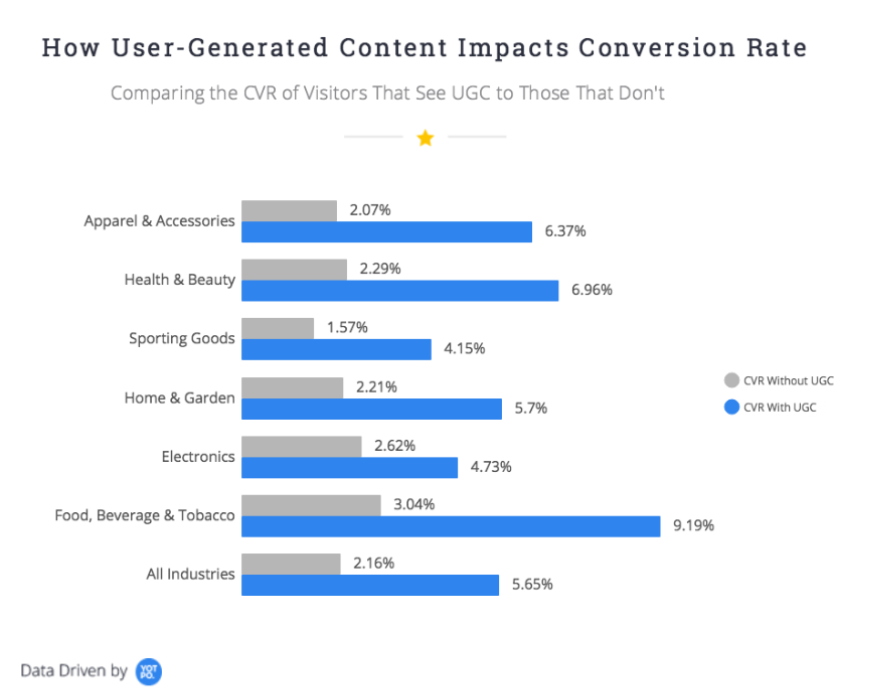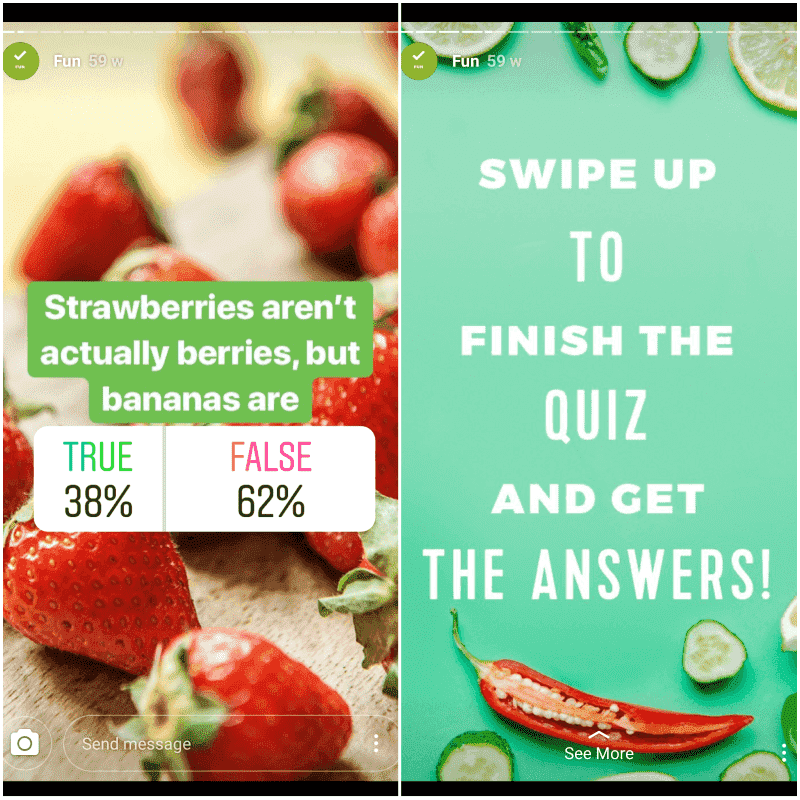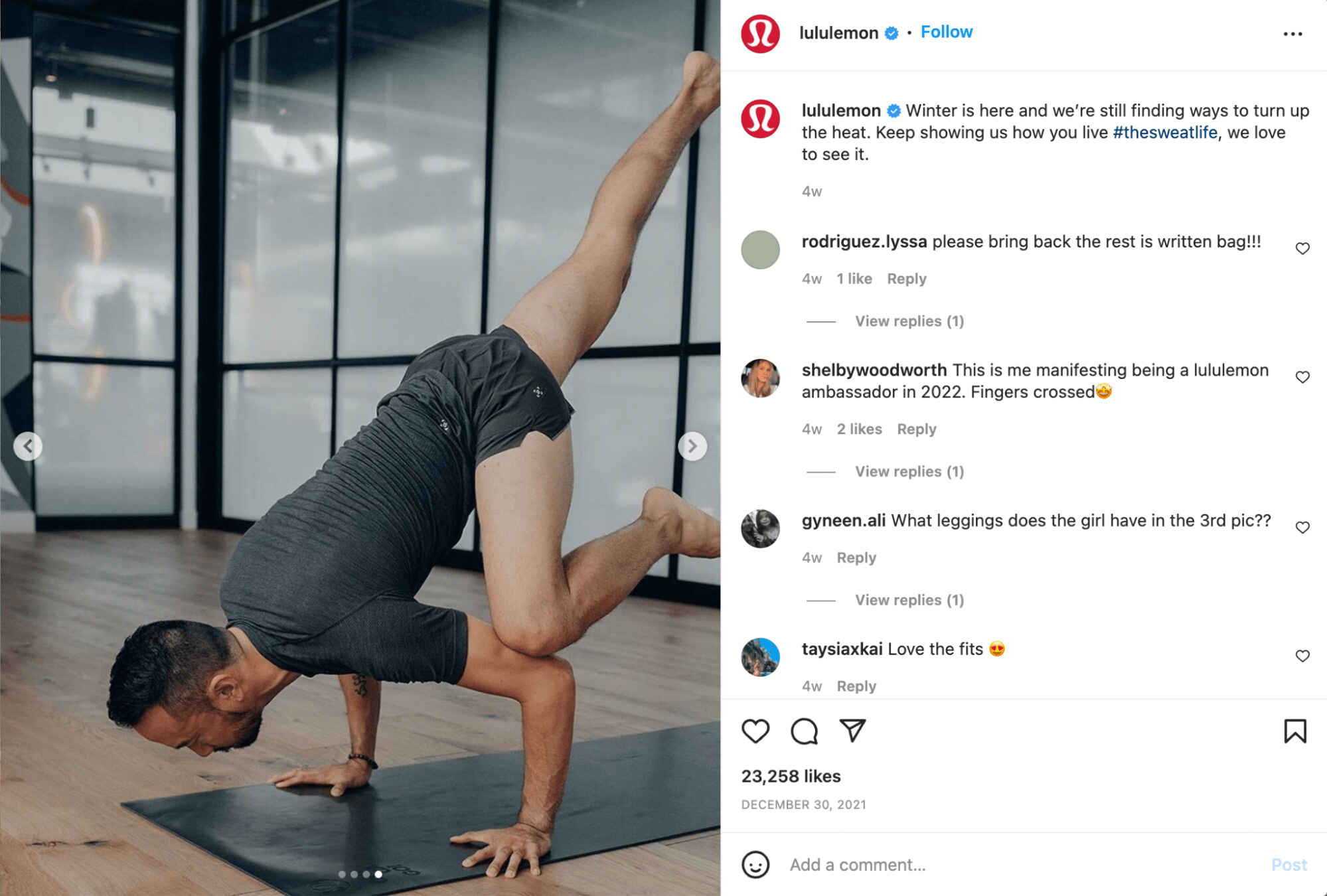Start Exploring Keyword Ideas
Use Serpstat to find the best keywords for your website
Why User-Generated Content Matters and How to Get the Most out of It

However, if you have a growing business that has yet to establish a solid reputation on the market, you might have doubts about incorporating UGC into your marketing strategy. You may worry:
- What if a client leaves a negative review?
- What if people won’t engage with your campaign?
- Is it going to affect the brand’s identity in the wrong way?
These concerns are indeed legit. And we're going to address them and prove that UGC is worth taking a closer look at in this detailed article. So rest assured: UGC can be that extra push your marketing strategy needs to make those sales skyrocket.
Why Should You Care about UGC?
8 Ways to Get the Most out of UGC
- Show customer ratings and product reviews on your website.
- Have Fun with the Poll Function
- Do not Shy away from Negative Reviews
- Prioritize Visual UGC
- Use UGC as the basis for a customer loyalty program
- Start and Spread a Hashtag
- Organize a UGC contest
- Collaborate with micro-influencers
Conclusion
What is User-Generated Content?
You can safely take UGC at face value when it comes to the meaning of the abbreviation. It includes all types of content a consumer (or any person not involved in your business) produces voluntarily. In other words, people do not get paid to create content related to your brand or product – different kinds of incentives are at play here (more on that a bit later).
The main types of UGC include:
- Product reviews and testimonials;
- Blog entries;
- Pictures and videos;
- Interviews;
- Polls and surveys;
- Hashtags;
- Q&A’s;
- Case studies, etc.
Consumers’ voices are now more visible and relevant to businesses than ever before.
Why Should You Care about UGC?
Yes. Absolutely.
“When 85 percent of consumers say they find UGC more influential than brand-created content, it’s time for marketers to listen. It’s more important than ever for brands to have a proactive strategy for connecting with consumers, inspiring UGC creation and leveraging that content to increase performance across all of their channels.”
Let’s see why UGC seems to have become the cornerstone of any successful marketing strategy these days:
- UGC translates into your brand’s trustworthiness and credibility.
How does it look? Well, people trust other people – UGC is raw, accurate, and, therefore, much more believable than an old-fashioned ad. The quantity and quality of UGC related to your brand represent how much people appreciate and value it.
- UGC is excellent if you rely on word-of-mouth marketing.
Here’s where UGC becomes an unlimited source of new talks and impressions people can share. In a way, UGC is word-of-mouth. And it serves the purpose perfectly.
- UGC guides purchasing decisions….
- … and it helps people deal with purchasing anxiety.
- UGC helps you build a community around your brand.
The more customers share their experiences with your product and recognize that you appreciate their voices, the more devoted they will be to your brand in general. Besides, the sense of community will encourage customers to align with your vision and mission.
- UGC consistently drives conversion rates up.
Here’s how it affects various commerce spheres:

- UGC is a SEO asset.
- UGC ensures the inflow of fresh and relevant content for major search engines;
- It boosts social optimization;
- UGC contributors (users) play an essential role in shaping an SEO framework with authentic and appropriate keywords and internal links.
- UGC is very affordable.
Investing in a solid UGC marketing strategy will cost you much less than squandering money on paid posts and glossy ads. And the jump in conversions and sales will be much more sustainable.
8 Ways to Get the Most out of UGC
- Show Customer Ratings And Product Reviews On Your Website
Then why have your potential customers look for reviews of your products at third-party online platforms when you can display UGC directly on your brand website?
Use these simple tips to make the most of adding ratings and/or reviews to your webpage:
- Update reviews and ratings often: outdated information would hardly pique your potential customers’ interest. Keep the surveys fresh and relevant.
- Sort reviews geographically: if your business covers more than one region, site visitors will benefit from being able to select location-specific ratings and reviews.
- Introduce eye-catching widgets: embeddable widgets allow your webpage visitors to leave a review on major sites like Google. Yet, you can link and display them on your website.
2. Have Fun With The Poll Function
And when it comes to marketing, poll function on social media such as Instagram or Facebook can drive audiences engagement up due to several simple factors:
- People feel that their opinion counts;
- When you ask to choose between specific options, people respond with more enthusiasm;
- Results are instantly visible – it spikes visitors’ curiosity.
Want a stellar case study? Take a look at HelloFresh: the prep-meal company regularly conducts Instagram polls and asks followers to decide which recipes and meal choices they want to see on sale. People know their opinions matter, and it manifests in HelloFresh constantly changing their menus to cater to the respondents' wishes. Excellent work with feedback!

Extra idea: another way to take advantage of UGC is to create poll ads on Facebook and Instagram. A recent Meta study shows that poll ads are more effective than traditional video ads when it comes to boosting engagement and brand awareness.
3. Do Not Shy Away From Negative Reviews
Yet, honest critical feedback from real customers is a valuable source of growth for your brand. If you think you can’t benefit from actively engaging with negative comments on your webpage or review platform, consider this:
53% of customers expect businesses to respond to negative reviews within a week. Yet, 63% of people say that they never got back to them at least one company they reviewed.
It’s not about being grumpy – customers want honest interaction, and they wish to witness the brand’s accountability for possible flaws or mistakes.
How can you respond to negative customer feedback responsibly?
- Acknowledge the problem and apologize to the user for the inconveniences;
- Personalize your response;
- Put forward possible solutions to the problem;
- Offer compensation or a replacement to the flawed item/service;
- Be friendly and respectful throughout all stages of interaction with the customer.
Pro Tip: to be able to track and address negative feedback and customers’ concerns in general, you can create a separate webpage where your brand will respond to reviews quickly. Some companies take it a step further and bring it on social media: Xbox and Nike have special Twitter accounts (@XboxSupport and @NikeSupport, respectively) whose sole purpose is to be there for their customers around the clock. This sort of attention to feedback is something to look up to.
4. Prioritize Visual UGC
Marketing is no exception to this dominance of visual media. Would you rather read a lengthy product description or watch a YouTube user review on the product of your interest?
The absolute majority of potential buyers opt for the latter nowadays. More than 80% of people say that visual UGC is more influential than any kind of official promotional brand materials.
Visual UGC provides a number of specific advantages over other types of user-generated content:
- People can see what your product looks like in reality;
- It is possible to analyze the product’s performance;
- Visual UGC is authentic and relatable.
5. Use UGC As The Basis For A Customer Loyalty Program
Suppose you want people to continue to choose your product on the market, where alternative options are nearly endless. In that case, a solid customer loyalty program is just the right kind of incentive for a buyer. And you can leverage UGC to create and develop such a program.
How does it work?
In a nutshell, you motivate your customers to contribute reviews, images, and videos of your product in return for a reward of your choice:
- Offer a discount for a future purchase to users whose pictures accumulate a high number of likes on social media;
- Organize giveaways to those buyers who have consistently shared reviews of your products;
- Give customers points for UGC submissions and exchange them for promo codes, discounts, other rewards, etc.
Björn Borg is a remarkable case of a loyalty program based heavily on UGC. The company organizes sports events and contests, motivating their customers to share the pictures and videos of their training sessions wearing the brand’s clothes on Instagram. As a result, customers get rewarded for staying active and promoting the brand’s image and values at the same time.
6. Start And Spread a Hashtag
A hashtag is a label you attach to the content related to your brand so that audiences can quickly identify and find it. So why not create a unique hashtag for your brand or campaign? People are so used to adding hashtags to all kinds of UGC that you won’t even need to convince your customers and social media followers to spread your brand-specific hashtag.
The more people include your hashtag into their reviews, photos, or comments, the more traction you get online, which will inevitably increase conversions.
If you’re new to hashtags as part of UGC-oriented marketing, here are some tips to help you reach bigger audiences and encourage people to spread your brand’s hashtags:
- Create a unique hashtag associated with your brand, people can include in their UGC. If it is concise and catchy, it can simply be #yourbrandsname or your brand's slogan.
- Start hashtags for your promotional campaigns, contests, and other events. Get people to use them as part of the whole company-buyer interaction process.
- Combine your unique brand hashtag with currently trending tags. Get people to associate your brand with major social media tendencies, events, or agendas. Remember the #icebucketchallenge that has conquered the Internet? Many businesses encouraged their customers to partake in the challenge to support the cause and stay on top of the public agenda. You and your buyers can be part of the hot trends, too.
- Use location-specific tags. If your business covers multiple regions, local hashtags will help customers create a sense of community. Plus, it will be easier for you to track your audiences’ activity geographically.

7. Organize A UGC Contest
Combining the power of interactive content with UGC is a killer tactic for spreading brand awareness and increasing sales.
People love the sense of adventure and competition, and you can leverage that by hosting a UGC contest – probably the most entertaining and viral-worthy type of interactive online event.
Come up with an engaging concept for the contest, and make UGC its central element.
As a prize, you can offer a free product, a sum of money, a spot in your ad campaign – whatever works for the brand.
National Geographic aced the UGC competition strategy by starting the Wanderlust campaign in 2015. People shared their best travel and nature photos on social media and competed for a week-long photo expedition to Yosemite National Park. This contest gathered hundreds of beautiful shots and helped increase the brand’s publicity.
So don’t be afraid to explore the engaging potential of a UGC contest for your brand. The money you invest in the campaign and the prize will come back, and then some – in the form of conversions, sales, and the brand’s increased visibility.
8. Collaborate With Micro-Influencers
If you want to maximize the flow of unique UGC related to your brand, consider collaborating with micro-influencers within your business niche. The benefits are multiple:
- Micro-influencers are easy to reach compared to major celebrities;
- Their audiences are dedicated and active, which boosts engagement rates;
- They will represent your brand in an authentic way.
Partnership with social media micro-influencers can take many forms. Consider the following to boost UGC related to your brand:
- Let the influencer review one or several of your products based on the followers’ questions;
- Have the influencer request photo and video submissions displaying or using your product;
- Organize a giveaway for the influencer’s followers based on their reviews (it can take the form of a UGC contest).
Leveraging UGC: Mistakes to Avoid
However, don’t let this fear stop you from leveraging UGC. Just make sure you always ask the contributor’s permission to share their content and don’t forget to give them credit. When you organize an extensive campaign, explicitly have people know that their images, videos, and other materials can appear on your brand’s web pages or social media.
Develop the core concept of your UGC strategy and decide what kind of content would present your product and brand in the best light. Then follow this view when selecting the repost-worthy material.
Better yet, tell your audiences exactly what you want!
53% of contributors would like to receive clear guidelines on what kind of content the company expects them to create, and 42% would appreciate specific examples.
Define the format, tone, and style of content you think works best for the brand, and don't hesitate to encourage potential contributors to follow suit.
For example, if you're an openly eco-friendly brand, avoid partnering with nano- or micro-influencers who may wear fur or promote animal-tested cosmetics. People are quick to spot such inconsistencies and will label your company as two-faced or insincere. This reputation will hurt both your credibility and sales.
The same goes for individual contributors. Do not repost offensive, controversial, or politically charged UGC to stay away from potential conflicts.
To be extra-safe, establish a way of tracking your UGC and make sure you do not abandon your core philosophy while chasing UGC flow. You may also consider creating specific ethical UGC guidelines for users.
Conclusion
Whether you are investing in a well-thought-out UGC campaign or simply reposting occasional reviews from your customers – UGC has a way of attracting people to your brand and manifesting its quality. Nothing speaks louder than honest feedback from real people.
Don't be afraid to engage with UGC marketing and take advantage of this article's tips, examples, and guidelines.
Speed up your search marketing growth with Serpstat!
Keyword and backlink opportunities, competitors' online strategy, daily rankings and SEO-related issues.
A pack of tools for reducing your time on SEO tasks.
Discover More SEO Tools
Text Analysis Tool
Unlock the power of your text data with our advanced Text Analytics Tools
AI Content Detection
Ai Content Checker – realize if the text is AI-generated
AI Text Generator
Try our AI Content Writer tool and streamline your content creation process
AI Content Tools
AI Content Marketing Tools – simplify and optimize the content creation process
Recommended posts
Cases, life hacks, researches, and useful articles
Don’t you have time to follow the news? No worries! Our editor will choose articles that will definitely help you with your work. Join our cozy community :)
By clicking the button, you agree to our privacy policy.

